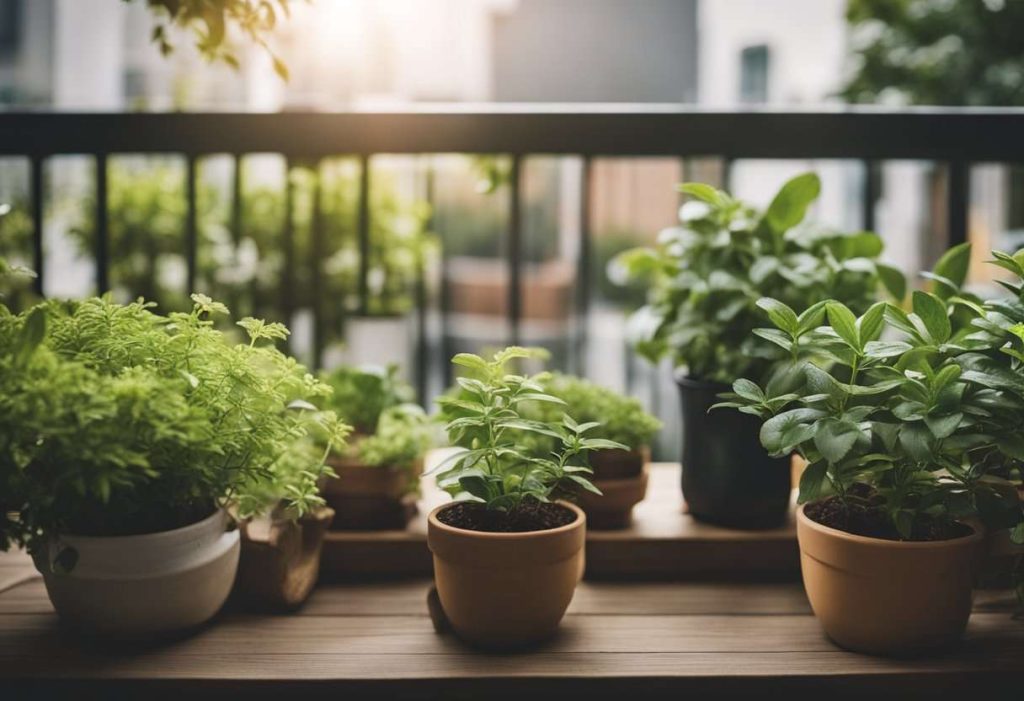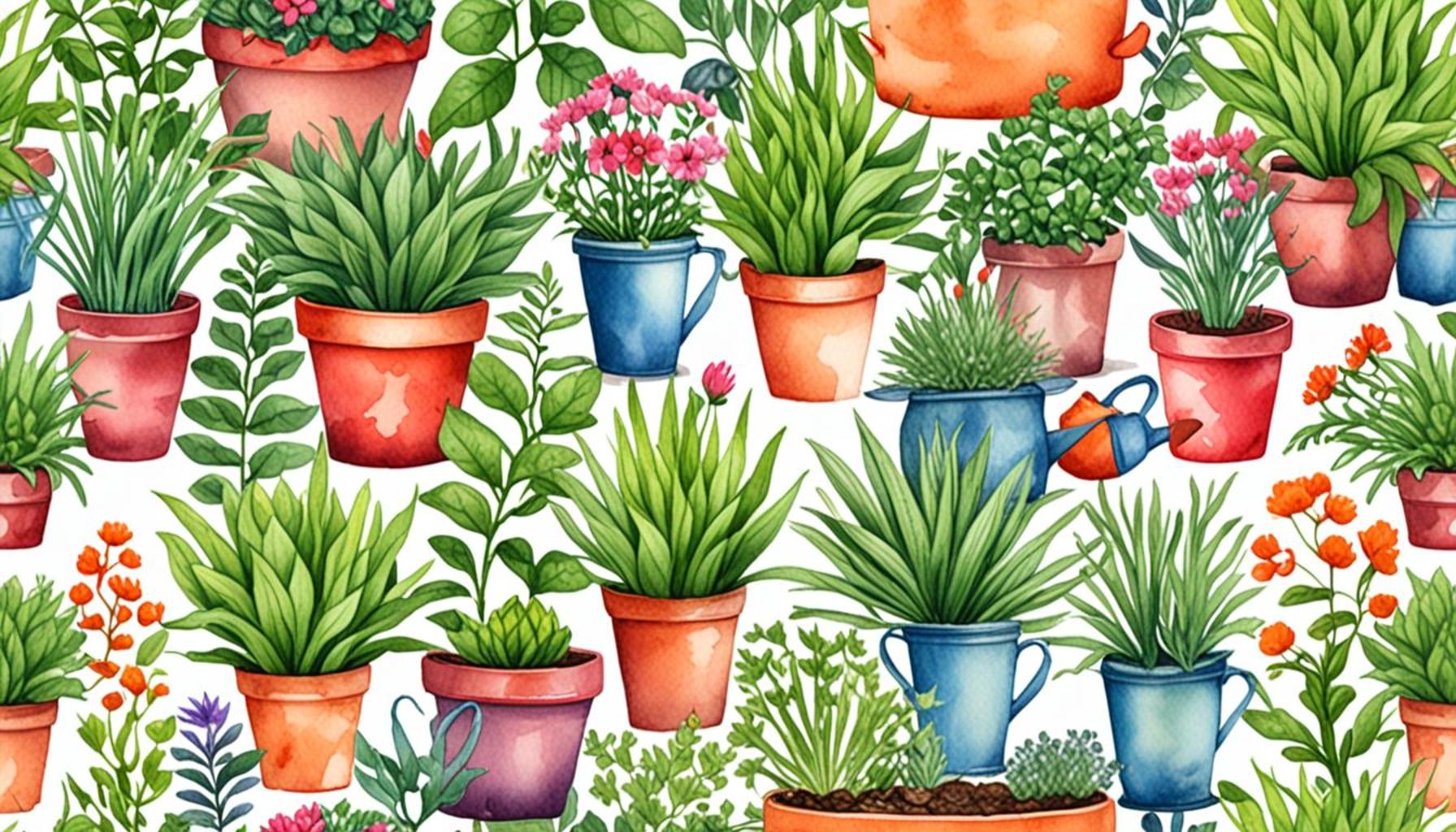How to Select Aromatic Plants for Gardening Beginners

Exploring the Joys of Aromatic Plants
Embarking on your gardening journey may seem daunting at first glance. The abundance of plant varieties can lead to uncertainty about where to start. However, delving into the world of aromatic plants provides a splendid and accessible option for newcomers. These plants are not only visually appealing; they also engage the senses and serve multiple practical purposes, making them a favorite in home gardens across the United States.
Aromatic plants are distinct not just for their fragrances, but for their varied applications. Here are a few features that make them particularly attractive:
- Fragrance: From the invigorating zing of lemon balm to the calming scent of chamomile, aromatic plants deliver a diverse spectrum of aromas that can uplift your mood, enhance relaxation, or even reduce stress.
- Growth requirements: One of the appealing aspects of aromatic plants is their hardiness. Varieties like thyme and sage thrive in a range of environments, requiring minimal maintenance, which is perfect for those in urban areas or with limited space. They can easily be grown in pots on a balcony or in a small garden bed.
- Utility: Beyond their sensory benefits, many aromatic plants can be used to elevate culinary experiences. Fresh basil, for instance, can transform a simple caprese salad, while rosemary can enhance roasted dishes. Furthermore, these plants often have medicinal properties; for example, peppermint can aid digestion while lavender is widely recognized for its soothing qualities.
For those ready to explore, here are a few exceptional aromatic plants to include in your garden:
- Basil: A culinary essential celebrated for its sweet and slightly peppery flavor, basil thrives in warm weather and can make an excellent companion to tomatoes, enhancing both growth and flavor.
- Rosemary: This hardy perennial is not only drought-resistant but can also be used to flavor meats and vegetables. With its needle-like leaves, rosemary requires little upkeep, making it ideal for beginners and busy gardeners alike.
- Lavender: Known for its striking purple blooms, lavender is a magnet for pollinators like bees and butterflies. Its aroma is often used in aromatherapy to improve sleep and reduce anxiety.
This guide aims to simplify your selection process, taking into account climate, soil consistency, and planting combinations. As you venture into fragrant gardening, consider the unique microclimate of your home—partial shade, full sun, or even a humid environment all influence your choices.
With thoughtful selection and care, you can cultivate an aromatic garden that not only captivates your senses but also elevates your culinary endeavors and enhances your overall well-being. So why not step outside and start your aromatic gardening adventure today? You’ll soon find yourself immersed in the enchanting world of scents, flavors, and the satisfaction of nurturing your very own plants.

CHECK OUT: Click here to discover year-round blooming plants
Choosing the Right Aromatic Plants for Your Garden
As you embark on your aromatic gardening journey, understanding how to select the right plants is crucial. Various factors such as climate, soil type, sunlight availability, and intended use will play significant roles in your choices. Here, we will delve deeper into these aspects to equip you with the knowledge needed for a successful aromatic garden.
Understanding Your Growing Conditions
Before you start planting, it is essential to assess the environment in which your aromatic plants will grow. This encompasses several elements:
- Sunlight: Most aromatic plants prefer full sun, which typically means six or more hours of direct sunlight each day. However, some varieties, such as mint and lemon balm, can tolerate partial shade, making them more versatile for limited-sun areas.
- Soil type: Aromatic plants generally favor well-draining soil. A loose, sandy, or loamy soil composition is ideal for preventing root rot. You may also want to test your soil pH, as many aromatic plants thrive in slightly acidic to neutral conditions (pH 6-7).
- Climate: Your local climate will dictate which aromatic plants will survive and thrive. Regions with mild winters and warm summers (like much of California) may support a wider variety of herbs than areas with harsh winter conditions. Researching hardiness zones will help you identify suitable plants for your location.
Assessing Your Gardening Goals
With a clear understanding of your environment, consider what you wish to achieve with your aromatic garden. Are you looking to create a culinary herb garden, a therapeutic herb garden for relaxation, or perhaps a pollinator-friendly space? Answering these questions will guide your plant selection.
For those interested in culinary delights, incorporating herbs like basil, oregano, and chives may be beneficial. If your goal leans more towards wellness, then try lavender for its calming effects or peppermint for refreshing notes that also soothe the stomach.
Companion Gardening
One of the joys of aromatic plants is that many of them can thrive together in a garden setting, enhancing each other’s growth. Companion planting can lead to a more vibrant and productive garden. For instance, basil not only flavors your dishes but also acts as a pest deterrent for tomatoes, making it an excellent companion for this fruit. Similarly, planting rosemary alongside cabbage can improve cabbage’s growth and ward off pests.
As you begin to explore the possibilities, remember that aromatic plants are not just mere additions to your garden; they are tools that can improve your home environment, culinary experiences, and even your well-being. With careful consideration of your growing conditions and gardening goals, along with an understanding of companion planting, you’ll find that selecting aromatic plants can be both enjoyable and fulfilling.
Choosing the Right Aromatic Plants
When starting your journey into gardening, specifically with aromatic plants, it’s crucial to understand how to select varieties that suit your environment and gardening style. Here are some essential considerations to help you on your way.
1. Climate and Environment
Understanding your local climate is fundamental. Different aromatic plants thrive in varying conditions. For instance, lavender prefers warm, dry climates, while mint flourishes in cooler, moist areas. Research the hardiness zone of your region to identify which plants will best survive and thrive in your garden.
2. Space Considerations
Consider the amount of space you have available for planting. Some aromatic herbs, like basil and oregano, can do well in containers, making them perfect for small spaces. On the contrary, plants like rosemary may require more room to grow and spread. Choosing the right planting method will significantly influence your success.
3. Purpose of Use
Determine why you want to grow aromatic plants. Are you interested in culinary uses, medicinal properties, or simply for their fragrance? For culinary purposes, herbs like thyme and cilantro are excellent choices, while lavender adds a delightful aroma and calming benefits.
Benefits of Aromatic Plants in Gardening
Incorporating aromatic plants into your garden not only enhances its aesthetic appeal but also offers numerous benefits. They can attract beneficial insects, repel pests, and even improve air quality. Their various scents can also create a relaxing environment that enhances your gardening experience.To summarize, when selecting aromatic plants, consider your climate, available space, and individual preferences regarding purpose and use. Armed with the right knowledge, you can create a flourishing garden that delights the senses and enriches your life.
| Category | Description |
|---|---|
| Climate Adaptability | Different plants thrive in specific climates, influencing their growth and yield. |
| Space Requirements | Container plants for small spaces versus sprawling plants needing more room. |
| Use and Benefits | Culinary, medicinal, and aromatic purposes influence choice. |
Understanding these factors will enrich your gardening experience, making it both fruitful and fulfilling.
DISCOVER MORE: Click here to learn how to choose the best perennial plants
Choosing Varieties that Suit Your Skills
As you begin to select aromatic plants for your garden, it is equally important to consider your gardening experience and the maintenance requirements of different plants. Some aromatic plants may require more effort in terms of care, while others are well-suited for beginners. Here are a few categories and examples to keep in mind as you explore your options:
Low-Maintenance Aromatic Plants
If you are just starting your gardening adventure, consider starting with the hardy herbs that require minimal care. Herbs like thyme, chives, and sage are perfect for beginners. These plants can thrive in various conditions, need minimal watering, and are often resistant to pests. Thyme, for example, is a drought-tolerant herb that can be grown in sandy soil, making it ideal for those who may forget to water frequently.
Medium-Maintenance Aromatic Plants
Should you desire to embrace a bit more complexity, you can consider plants that require a moderate level of care. Herbs such as basil and cilantro fall into this category. They benefit from regular watering and occasional pruning to encourage bushy growth. Basil, in particular, enjoys warm weather and ample sunlight, making it a favored choice for summer gardens. However, it can be susceptible to pests like aphids, thus demanding more attention.
Higher-Maintenance Aromatic Plants
For those feeling adventurous or looking to expand their gardening skills, there are aromatic plants that require consistent care and monitoring. Plants such as lavender and certain varieties of mint can be a rewarding challenge. Lavender thrives in well-drained, slightly alkaline soils and requires proper pruning post-bloom to ensure continued health and vigor. Mint, while delicious and fragrant, is often invasive; thus, it is best grown in containers to keep it contained.
Exploring the Benefits of Native Aromatic Plants
Another vital component to consider in aromatic plant selection is the incorporation of native species. Opting for native aromatic plants can offer numerous benefits, including enhanced resilience to local pests and diseases, as well as supporting local ecosystems. For example, American beautyberry and echinacea provide aromatic and medicinal properties while attracting pollinators to your garden.
Engaging with Local Gardening Communities
As a beginner, tapping into local gardening communities can greatly enhance your knowledge and experience with aromatic plants. Many regions in the United States have gardening clubs or extension offices that provide resources, workshops, and events focused on native plants and aromatic gardening. Participating in these communities allows you to exchange ideas, share experiences, and gain insights on plant selections that work best in your specific climate and soil conditions.
In addition, local nurseries often carry plants that are best suited to your area’s growing conditions, which can save you time and effort in your garden planning. Utilizing resources from these community connections can turn your aromatic gardening experience into a joyful and successful journey.
DISCOVER MORE: Click here for DIY pest deterrents
Conclusion: Embrace the Journey of Aromatic Gardening
Choosing the right aromatic plants as a beginner gardener can be a wonderfully rewarding experience. By understanding maintenance levels and recognizing your gardening skills, you can create an aromatic garden that brings joy to your senses and complements your lifestyle. Starting with low-maintenance herbs like thyme and chives can boost your confidence and provide a sense of accomplishment, while more complex varieties such as lavender and mint can deepen your appreciation and expertise in gardening.
Moreover, incorporating local native plants not only enhances the resilience of your garden but also supports local ecosystems and wildlife. This ecological mindfulness expands the significance of your gardening practice beyond your backyard, as you actively contribute to the health of your environment. Engaging with local gardening communities opens avenues for growth, providing you with vital knowledge, resources, and camaraderie.
Ultimately, aromatic gardening is as much about the experience as it is about the plants. It invites you to explore, experiment, and connect with nature. As you embark on this journey, remember to remain curious, patient, and open to learning. The world of aromatic plants is rich and diverse, offering endless possibilities for those willing to cultivate their gardens and their passion. So gather your tools, select your plants wisely, and relish every moment spent nurturing and enjoying your fragrant, vibrant haven.



